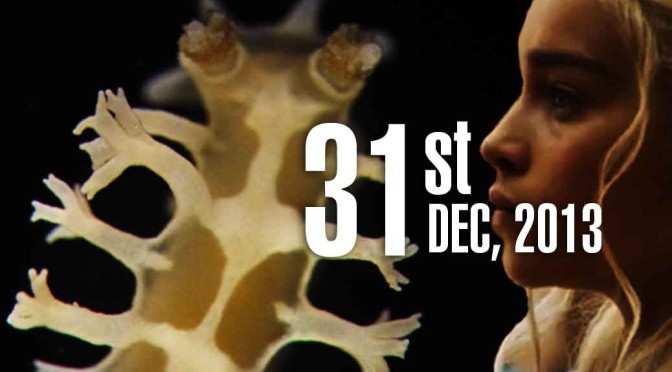By Anupum Pant
Wish you a Happy 2014
It’s the last day of the year! What am I doing?
I’m writing this blog-post while everyone in the city is partying. That might sound like a sad thing, but I like to think of celebration as something that isn’t the same for everyone.
For instance, think of the sea slugs for a moment. The last day of the year means nothing to them. Even when it is party time for everyone else, they do the thing they do every day. Although it makes sense here, sea slug is not to be confused with the first generation British surface-to-air missile.
Anyway, I wish all of my readers a very happy and a successful 2014. If you need some help with sticking to New Year resolutions, you could check this out – [Help!]
So, talking about sea slugs – A sea slug can be thought of as a type of a snail, without a shell living in the sea. But, why am I talking about sea slugs suddenly? There is a reason.
A new sea slug
Felipe de Vasconcelos Silva, Victor Manuel De Azevedo, and Helena Matthews-Cascon from the Federal University of Ceará discovered a new kind of sea slug off the coast of north-east Brazil. They decided to name it Tritonia khaleesi.
If it doesn’t ring a bell, it is probably because you do not watch Game of Thrones on TV. They named it after the mother of dragons, Khaleesi, from the Game of thrones – a fantasy drama television series which is an adaptation of A Song of Ice and Fire, George R. R. Martin’s series of fantasy novels.
Why did they name it that?
If I may quote the scientists themselves, their words pretty much answer this question:
The standard of the silver band on the back of the slug reminds braids Khaleesi of silver hair, especially in the last episode of the first season of the show. Besides silver color, the species is one of the smallest sea slugs, as well as Khaleesi is also described as low and new.
What did you learn?
Well, Several things! Things like:
- Scientific names can be after character names from TV shows or fantasy novels.
- The British called their first generation surface-to-air missile – Sea Slug.
- New species are being discovered even today. BTW, it is estimated that 86% of the species still living on earth are still waiting to get discovered.
- And of course, the new sea slug is named after Khaleesi.






